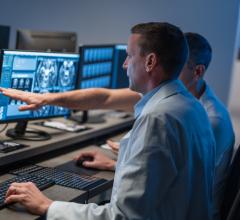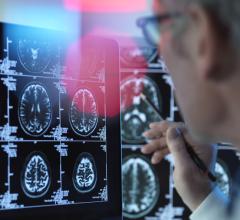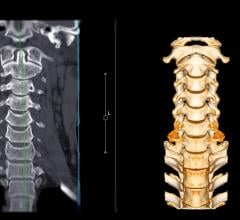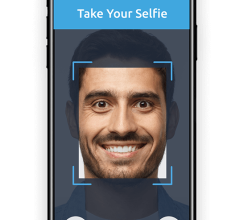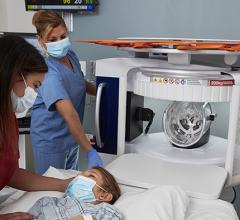
Greg Freiherr has reported on developments in radiology since 1983. He runs the consulting service, The Freiherr Group.
BLOG: How AI Could Make Radiologists’ Jobs Less Stressful
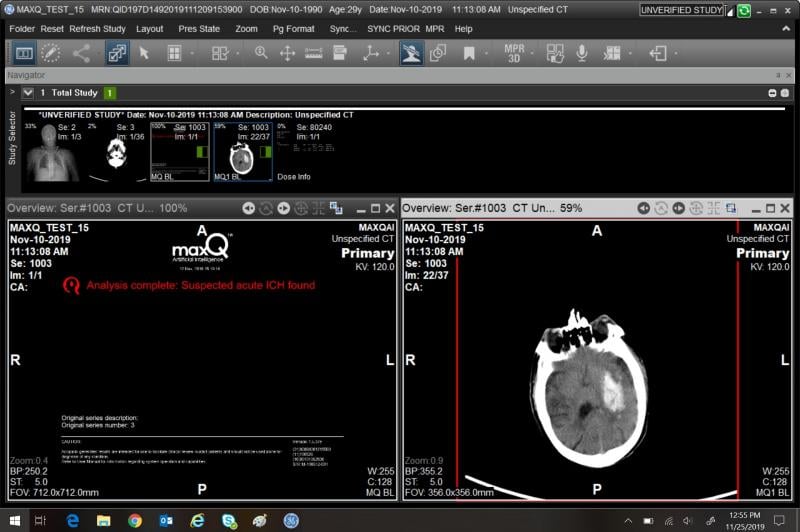
在芝加哥通用电气医疗保健实验室进行的一次演示中,一个智能算法绘制了一张显示疑似急性颅内出血(ICH)的脑部扫描图像。该算法由第三方公司MaxQ AI开发。Screenshot courtesy of GE Healthcare
Radiologists are being asked to make simple what is increasingly complex — and to do so quickly, efficiently and at less cost. All the while, the data required to do so is becoming more unwieldy. This may be causing some radiologists toburnout.
Burnout is a concern for radiology professionals, according to theAmerican College of Radiology. Although its underlying cause is debatable, there is general agreement that algorithms fueled withartificial intelligence(AI) might help radiologists overcome it. AI assistants have been suggested as the means to this end. As such they may sound great, but the proliferation of such automatic, artificially intelligent assistants could — ironically —have the opposite effect.
Rather than reducing workload, they threaten to add to it, requiring radiologists to learn how to operate each piece of software — with added clicks and added time, when the solution to burnout actually requires fewer clicks and less time.
Someone familiar with radiology workflow and the impact of automation on radiologists isKarley Yoder, GE Healthcare Vice President and General Manager of AI. “We have to take time out of time-consuming and inefficient processes,” said Yoder, noting that this has to be done in a way that does not increase the workload put on the radiologist.
Like a Symphony Conductor
The Edison Open AI Orchestrator may provide the means for achieving this objective. The Orchestrator runs AI functionality automatically in the background when it is needed. Much like a human conductor calls on the percussion, strings and wind sections of an orchestra at different times during a symphony, GEHC’s orchestrator would direct AI algorithms on what to do, when and how.
And like a symphony conductor, GEHC’s Orchestrator would always be present. Unlike the leader of a symphony, however, it would be transparent — invisible to the audience, in this case, the radiologist. In this way, it would relieve the burden of doing the needed “clicks,” while letting radiologists concentrate on making decisions.
“We want to prioritize tasks in a way that reflects clinical priority and how clinicians want to interact with their work,” Yoder said. This sort of intelligence is needed, she added, to coordinate which algorithm is relevant in the context of a given patient — and to standardize how AI insights are delivered.
Software like this might activate algorithms to group tasks in a worklist according to subspecialty such as neuroradiology or body CT. Then it might prioritize tasks in the resulting worklists. One smart algorithm might identify and flag likely cases of pneumothorax; another might scrutinize CT brain scans for signs of intracranial hemorrhage.
During a demonstration for阿根廷vs乌拉圭直播(ITN) at a GEHC laboratory in downtown Chicago, Edison Open AI Orchestrator accessed an algorithm that automatically assessed CT brain scans for the presence of hemorrhage. This algorithm, called the MaxQ ICH (intracranial hemorrhage), framed brain images that likely show hemorrhage indicative of stroke.
This algorithm is compatible with GEHC’sCentricity PACSand its Edison Open AI Orchestrator. In the near future, it may be joined by more than a dozen such algorithms.
“Our goal for next year is to (ensure compatibility) with about 20 AI algorithms (throughAPI (application programming interface), integration into) our ecosystem,” saidUma Subramanian, Senior Technical Product Manager at GE Healthcare. These will be a combination “of in-house GE algorithms (as well as) third-party algorithms.”
GEHC has developed an open specification, similar to an API, that third-party companies can utilize to make their algorithms compatible with the Orchestrator. “We could then provide these algorithms for use by our customers,” she said. Or that the ones purchased from these third parties directly are compatible with its PACS solution, according to the company.
Centricity PACS
Although Edison Open AI Orchestrator currently is designed only for use within the Centricity PACS, it may eventually be compatible with other PACS and vendor-neutral archives. GEHC engineers ultimately want to make the Orchestrator widely available.
“You would open up your PACS like normal. However all of a sudden the worklist would be prioritized and the information you need would be right at your fingertips,” Yoder said. “So Open AI Orchestrator does not operate like a separate tool. Instead it’s always there, always working behind the scenes.”
Orchestrator甚至可能被嵌入到特定的成像技术中,如便携式x光机,或连接到成像设备的电子盒中。这样的盒子可能提供由开放AI Orchestrator中央管理的优势,同时允许广泛支付软件和AI算法。
But these are future possibilities. In the immediate future, Orchestrator will be bound exclusively to Centricity PACS. As such, it will call up software functions, some ordered by algorithms built on GE Healthcare’s Edison platform; others by algorithms built by third-party manufacturers.
The Edison Critical Care Suite with its algorithms to identify the probability of a collapsed lung, exemplifies technology built by GE Healthcare. TheMaxQalgorithm utilized on this solution exemplifies technology built by a GEHC partner — a third-party.
“The reason we are not just focusing on GE Healthcare-developed algorithms is that we have heard from customers, radiologists and heads of departments, that they want to choose the algorithm that works on their images,” Subramanian said. “So the benefit or advantage of having an ecosystem is that we allow third parties to collaborate with us, so the end user — the customer — has the benefit of all the algorithms and not just those from GE Healthcare.”
Editor’s Note:This is the second blog in a four-part series about how artificial intelligence might be used to combat radiologist burnout. The first blog,How Burnout Puts Radiology at Risk, can be foundhere.
Related content:
BLOG: How Burnout Puts Radiology at Risk
“Dealing with radiologists burnout,” HealthManagement.org, April 3, 2019


 August 11, 2022
August 11, 2022



